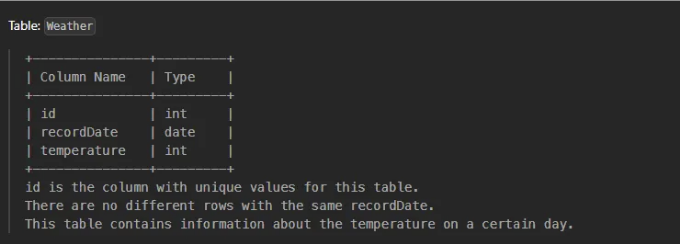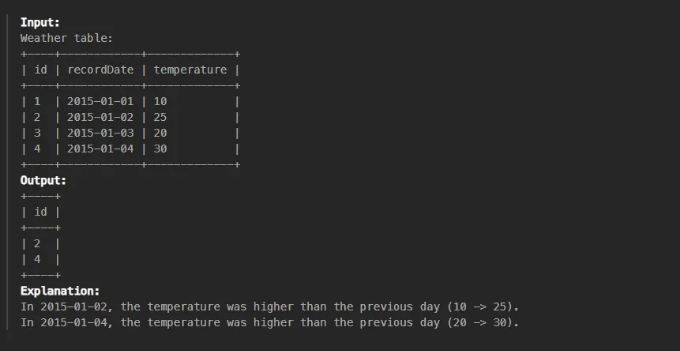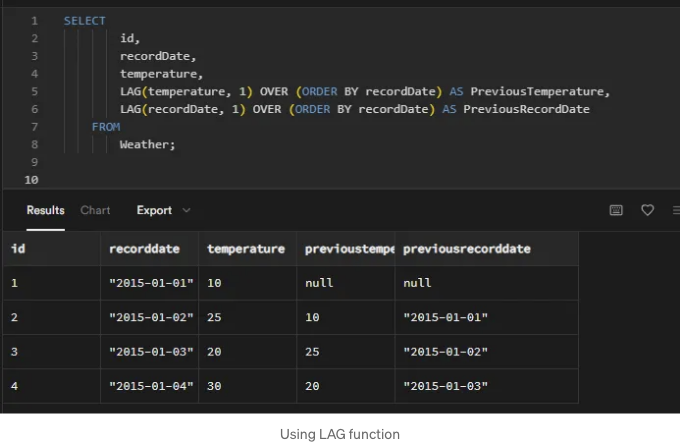
Tables

The Problem
예시

해결책
The trick lies in the self-join, which allows us to compare values within the same table.
Imagine that ww.recordDate represents today's date, and we want to find a date which is one day before. This means that ww.recordDate is today, and w.recordDate is yesterday. With this presumption, we expect that ww.temperature (today) is higher than w.temperature (yesterday).
SELECT ww.id
FROM Weather w
JOIN Weather ww on w.recordDate = (ww.recordDate - 1)
WHERE ww.temperature > w.temperature;
Another way to solve this is by using the LAG window function. We will prepare all the necessary data in one result set. In the second step, we compare the temperatures and dates. It's a similar approach to a self-join but uses the LAG function.

WITH PreviousWeatherData AS
(
SELECT
id,
recordDate,
temperature,
LAG(temperature, 1) OVER (ORDER BY recordDate) AS PreviousTemperature,
LAG(recordDate, 1) OVER (ORDER BY recordDate) AS PreviousRecordDate
FROM
Weather
)
SELECT
id
FROM
PreviousWeatherData
WHERE
temperature > PreviousTemperature
AND
recordDate = PreviousRecordDate + 1;
데이터
만약 직접 시도해보고 싶다면 데이터를 생성하고 삽입하는 쿼리를 추가할게요.
CREATE TABLE Weather (
id INT,
recordDate DATE,
temperature INT,
PRIMARY KEY (id)
);
INSERT INTO Weather (id, recordDate, temperature) VALUES
(1, '2015-01-01', 10),
(2, '2015-01-02', 25),
(3, '2015-01-03', 20),
(4, '2015-01-04', 30);
Leetcode challenge — https://leetcode.com/problems/rising-temperature/description/